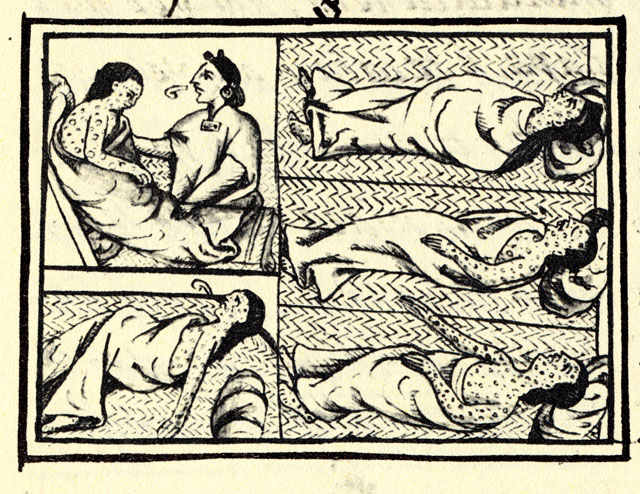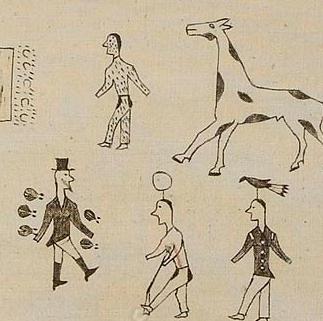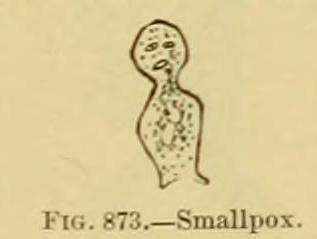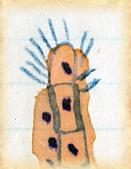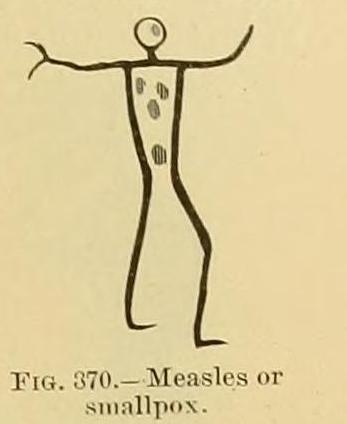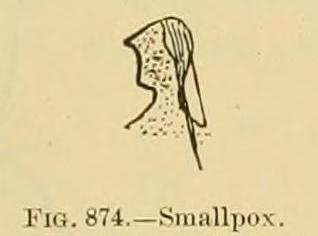Small Pox: the Native American Version February 10, 2014
Author: Beach Combing | in : Modern , trackbackThe greatest weapons that European colonists had at their disposal when they disembarked in the Americas in the sixteenth through the eighteenth centuries were not their muskets or their swords or their armour. They were, of course, their viruses (and those of their animals) with which they inflicted (at least at first unknowingly) devestation on the native peoples of the Continent. Smallpox (Variola major to the whitecoats) could wipe out a good many Europeans if it put its mind to it: for example, in 1780, perhaps a quarter of largely European Mexico City, was killed by the disease. But when it reached non-European populations, be they Africans or American Indians the effects were far worse: probably at least half of a given population and in some areas, e.g. Carribean Islands, the results were even more devastating. What was it like to be in a Mandan or Sioux village when smallpox – a stinking, unpleasant, painful illness – struck? We have some written nineteenth-century accounts usually remembering the most catastrophic cases from the eighteenth century. But perhaps the most vivid records are the pictures that some Indian artists sketched down to recall the coming of the spots. True there is nothing as vivid as that incredible sixteenth-century work in the sixteenth-century Florentine Codex showing the Nahuas of Mexico suffering under the tyranny of the running sore (see above): the image of rigor is particularly striking. But to the north Plains Indians and other groups also memoralised awful experiences, especially in their Winter Counts (a kind of annalistic system where a pictogram recalled the main events of the year). Here below we include one larger pictogram from the Lakota Winter Count. Note that Europeans were portrayed as men with hats among the tribes. See the man with small pox just above the visiting pale face in 1837 when the Lakota suffered a devastating outbreak.
Below, instead, are a number of records from other tribes. These Lowry-style matchstick men and women represent a magnum bottle full of human misery ready to fizz over.
Small pox was carried by traders into the interior and then by the nomadic tribes on and up. The disease is so virulent that even an attack on an ‘ill’ village seems, in one case, to have spread the pox from an infected to a non-infected people. By some reckonings 90% of the native populations of the Americas were wiped out by small pox and allied diseases.
Any other small-pox images from native North America? Drbeachcombing AT yahoo DOT com
James writes: It’s a little old now, but McNeil’s “Plagues and People” had an interesting discussion about this subject. Invisible, meanwhile, writes: You asked for other Native American smallpox depictions. This is an indirect representation of the ravages of the disease. This is a portrait of St. Catherine Tekakwitha, the Iroquois saint, painted by a Jesuit who knew her, Father Claude Chauchetière. Tekakwitha had nearly died of smallpox when she was a child and the disease left her badly scarred and partly blind. The shawl over her head was used to shield her sensitive eyes from the light. Witnesses said that, directly after her death, the smallpox scars disappeared, as did the traces of her religious mortifications, and her face became radiantly beautiful.’ Thanks James and Invisible!

